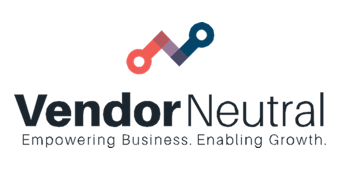A Few Things You Should Know Before Selecting New Sales Technology
Selecting New Sales Technology
Owners of the Sales/Marketing tech stack should always be evaluating technology. A good rule of thumb to remain an informed innovator is to dedicate 30-60 minutes a week to demoing tools. It’s also wise to schedule a quarterly review with all of your existing vendors to discuss your experience with them as well as their upcoming product road map. If you are spending up to an hour a week demoing new technology, you can make more informed decisions at renewal time. It’s crucial to be “in the know” when it comes to the best in class tools and the vendors who are dialed into current trends and needs. Sounds simple, right? It used to be, but now there are thousands of tools out there, so let’s take a look at a few considerations when building out your tech stack.
What are you trying to solve for?

Shiny and new is always exciting and there are some stellar sales reps out there that can pitch a solution that will knock your socks off. One of the drawbacks of being a consistent tool evaluator is the kid in the candy store syndrome where you want to buy absolutely everything and have your very own Frankenstack. Wouldn’t it be cool to automate everything? How about AI? Easy access to training? The wish list for any revenue leader is usually long. That’s why before you step into the exciting world of tech evaluation you need to first identify the problem(s) you are trying to solve for. Build a scorecard that includes things like rep skill, sales process, lead quality, deal velocity, training retention, and any other challenging areas (be as specific as you can be) and then on a scale of 1-5, rate your team honestly. Next to each challenge write dollar signs for how much of a financial impact this area has (one $ for low impact on revenue and $$$$$ for major impact). Now you have your starting point. If you have an area of opportunity with high dollar impact, you are ready to dig into solutions focused on that area.
Voice of vendor.
One new trend in the tech industry is the thought leadership movement that keeps the ideas of vendors out in the public by way of posts, blogs, webinars, and videos that are all easily accessible on social (Twitter/Facebook) and business (LinkedIn) media. Demos can give you great information about new technology, but listening to the voice of the vendor can let you know what the hottest trends are, how they are addressing those trends, and launch you head-long into a community of practitioners whose cumulative work is defining the future of technology. Good vendors understand the impact of their solution, but great vendors are focused on the upcoming challenges of their prospects and customers.
Do you need something specific or general?
There are two different kinds of tools on the market. The first is the general tool that can be a blanket solution. The most obvious example being CRM. It can solve for process, training, analytics, marketing, and service needs (and much much more). I would also add sales engagement tools to this category because they include access to several contract channels, analytics, and scheduling (that are continuously evolving). These types of tools are a heavy lift to implement but can solve a broad array of challenges while creating a smoother and more transparent sales process. On the other end of the spectrum, there is the specific tool that does the specific thing. These are solutions like calendaring or content management tools. Of course, there are always creative ways to leverage these tools, but they are built to address a specific challenge. When you have your problem area identified and find vendors who have a voice and point of view that resonates with you, then it’s time to consider how to tackle your challenge. For example, if you feel like your challenge is rep skill you might want to dig deep into coaching or training tools (specific). If your challenge is your sales process, you might want to go for a broader solutions (general) that addresses the weak spots in your marketing and sales funnel.
Budgeting for new tech.
When you have your problem identified, find a voice of vendor that inspires you, and decide whether you need a general or specific solution then it’s time to make the business case. If you have money in the budget for tools, then you are already set up for success (pending a successful negotiation). If you do not, then it’s time to build the case you need to justify the spend. The easiest way to do this is to first establish the cost of the problem (dormant deals, rep turnover, competitive losses). From there you should work with your vendor on the potential ROI of their technology (ideally leveraging success that other similar companies have had with their solution). If a vendor does not have that information at the ready, that should give you pause. Every vendor worth their salt has a success story in every vertical that shows a problem that needed solving, what that problem cost the company, and how the tech positively impacted the revenue of the company). There are potentially a lot of other considerations (such as ease of implementation, rep adoption, etc.) that could be included in this business case. These numbers should make a compelling case for what has been done in similar companies and therefore what is possible for yours.
This a pretty simple list for evaluating technology. Those of you who own tech stacks know it can be much more involved than problem, vendor identification, and budgeting, but this is a good place to start. If you have a process and a plan and set up time for evaluation (new tech weekly and existing tech quarterly), you will be in a better position to deliver strong results more consistently.
Written by Chad Dyar

Chad is an Author, Musician, and Creative Sales and Marketing Innovator and Team Builder (CRM/Business Analytics/Social Selling Expert). You can find him on here on Linkedin.



